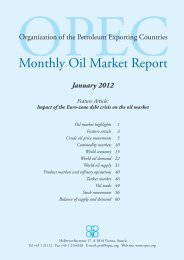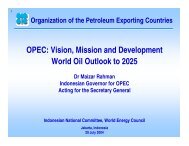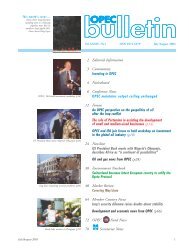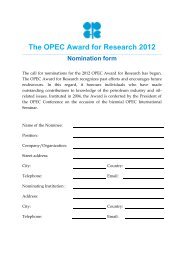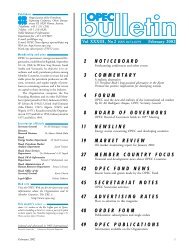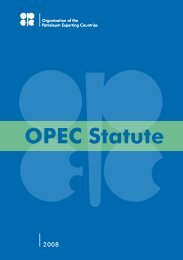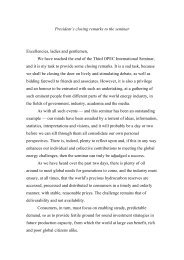Section One
Section One
Section One
You also want an ePaper? Increase the reach of your titles
YUMPU automatically turns print PDFs into web optimized ePapers that Google loves.
eing raised for private borrowers. In turn, this puts a drag on the economic recovery.<br />
At the same time, nervousness in financial markets may reduce confidence in indebted<br />
countries, raising the cost of borrowing in these nations, which then curbs economic<br />
recovery.<br />
There are also a number of potential medium-term consequences from the<br />
global financial crisis. Bank lending is not expected to recover soon. Furthermore,<br />
higher government debt and the need to cut expenditure could slow down productivity<br />
growth. In general, increased risk aversion, the necessity of banks to deleverage<br />
and capitalize, as well as disenchantment with financial innovation that contributed<br />
to boosting liquidity, points to the possibility of higher borrowing costs for both developed<br />
and developing countries. This could lead to a decline in the potential growth<br />
rate, since financial services are critical to the smooth functioning of an economy.<br />
In many respects, pessimism over longer term global economic growth potential<br />
can be traced to concerns that a backlash against globalization may come as a<br />
result of the disillusionment with the vulnerability of open markets, in particular<br />
capital market liberalization. Increased protectionism and more regionalism could<br />
endanger the present expectations of a benign recovery in global trade and economic<br />
welfare.<br />
For all of these reasons it is important to consider alternative, lower economic<br />
growth paths from the Reference Case assumptions.<br />
The assumption made in the lower economic growth scenario is for each region<br />
to witness 0.5% lower growth than in the Reference Case throughout the projection<br />
period. This does not, of course, preclude the possibility of more severe short-,<br />
medium- or long-term downward pressures upon growth.<br />
On the other hand, uncertainties over economic growth can also point to upside<br />
potential. A central focus of such a higher growth scenario would be how this might<br />
translate into oil demand, as well as the call on OPEC crude.<br />
The drivers behind such higher economic growth could be several. Firstly, in<br />
the coming years, emerging markets that are not as financially constrained as major<br />
OECD regions increasingly become the motors of world growth. The shift in economic<br />
weight to emerging markets, especially those in Asia, will have far-reaching<br />
economic and geopolitical consequences, some of which are slowly beginning to unfold.<br />
The emergence of the G-20 as the premier economic forum and the recognition<br />
by the G-20 in its Pittsburgh Summit Leaders Statement in September 2009 that<br />
“critical players need to be at the table and fully vested in our institutions to allow<br />
135<br />
Chapter<br />
4



